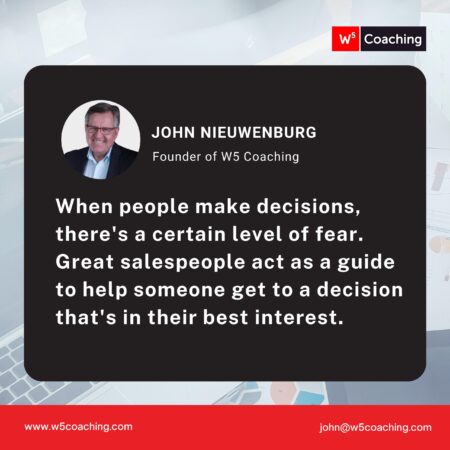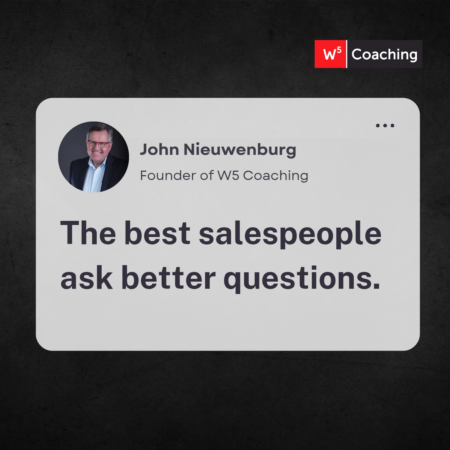Rethinking Sales: The Five-Act Play That Makes Selling Easier

If you’re a small business owner who dreads “selling,” you’re not alone.
I work with a lot of smart, service-minded owners who tell me they didn’t start their business to become a salesperson.
They’d rather be helping clients, solving problems, and doing the real work – not twisting arms or pitching offers.
The good news?
Selling doesn’t have to feel pushy, awkward, or manipulative.
Instead, with the right mindset, it can be a natural, service-oriented conversation.
Think of selling not as a battle to win or a script to memorize, but as a five-act play.
Your job isn’t to pressure someone into saying yes. It’s to guide them through a conversation that helps them make the right decision for themselves.
Here’s how it works. Watch the short video or scroll down if you prefer to read.
Act 1: Achieve Rapport
This first act is all about showing up as a real human being.
Spend 90 seconds talking about the weather, the game last night, or how their week is going.
It’s small talk with a big purpose: to build rapport and help both of you relax.
Then, you ask for permission to guide the conversation:
“Would it be OK if I outline how I’d like to spend our time together?”
Now you’ve (respectfully) moved from chit-chat to structure.
Act 2: Earn the Right
 This is the part a lot of people skip, but it’s crucial. Before you start asking about their business problems, you need to “earn the right” by sharing a bit about yourself.
This is the part a lot of people skip, but it’s crucial. Before you start asking about their business problems, you need to “earn the right” by sharing a bit about yourself.
Here’s how I think about it: You’re asking someone to open up. That’s a big ask. Before that happens, they need to know who you are and what you’re about.
So, take a minute to introduce yourself. Share a brief version of your background, how you work with clients, and what your product or service is all about.
Mention your approach or framework so they have a context for the conversation.
This isn’t about bragging. It’s about helping them feel safe and informed enough to engage honestly.
Once you’ve shared your background, you can transition by asking:
“Do you have any questions about me or my process before we dive in?”
Then: “What made you say yes to this meeting?” or “What’s going on in the business that you’re hoping to talk about today?”
This opens the door for them to share. You’ve given first, now you can ask.
Act 3: Explore the Problem
Now it’s their turn to talk. Your job is to listen. Not just for what’s being said, but for what’s underneath it.
Your goal here is to help them sort through the noise. What’s really going on? What’s the root issue? What’s keeping them stuck? What’s at stake if nothing changes?
And as you explore, something interesting often happens. They shift.
They might ask,
“So…how do you work with your clients?”
That’s a buying signal. They’re picturing a future with your help in it. Even if they don’t realize it yet.
This is your cue to transition to the next act. 
“Would it make sense to talk about what it would look like to work together?”
With that, you’re ready to move from diagnosis to potential solutions.
Notice the tone: permission-oriented, no pressure. You’re not pitching. You’re offering.
Act 4: Lay Out the Programs
Now that they’re open to the idea of working with you, lay out your programs or packages. Keep it simple. You might say:
“I have three options. This one probably isn’t the right fit for where you are right now, so let’s focus on these two.”
This stage isn’t about pitching or convincing. It’s about helping them make a clear, confident choice.
Once they’ve picked a direction, this question gracefully moves things forward.
“Should we talk about what we need to do to get started?”
Act 5: Agreement
Now you’re in logistics mode.
You finalize the agreement, get the credit card, set the start date, and give them a bit of homework to prep.
And don’t forget to acknowledge the moment:
“Congratulations! You’ve made a great decision for you and your business. Are you ready for some homework?”
Selling doesn’t have to feel like selling.
When you shift your mindset, it becomes something else entirely: a structured, respectful, and human conversation about whether it makes sense to work together.
If this way of thinking about sales feels like a relief, good.
It means you’re ready to lead better sales conversations. With confidence, clarity, and zero ick.
Want help putting this into practice?
If you need help improving your sales skills, it’s one of my specialties as a business coach. You can book 15 minutes on my calendar to discuss coaching here: book a call with John

Build a Self-Managing Company
How to build a business that runs smoothly, profitably, and (mostly) without you.
Feeling stressed out and overwhelmed with a business that is taking all your time - and not giving you enough in return?
Are you finding it challenging to hire the right team (and get them to do the right things)?
I wrote this little guide for you!
Enter your details below to receive your free copy!
